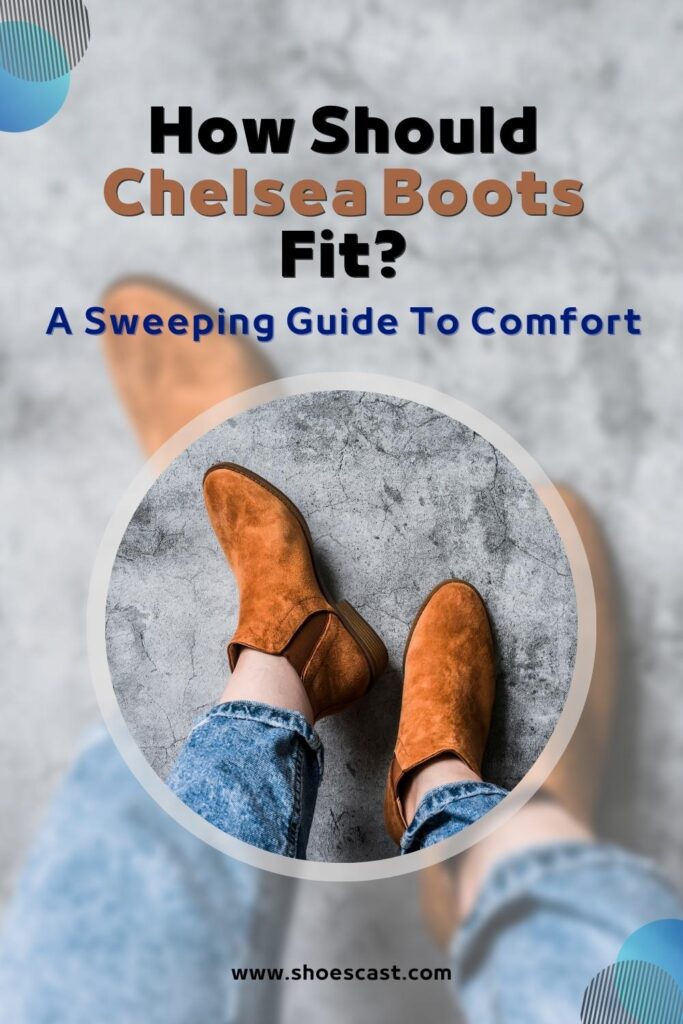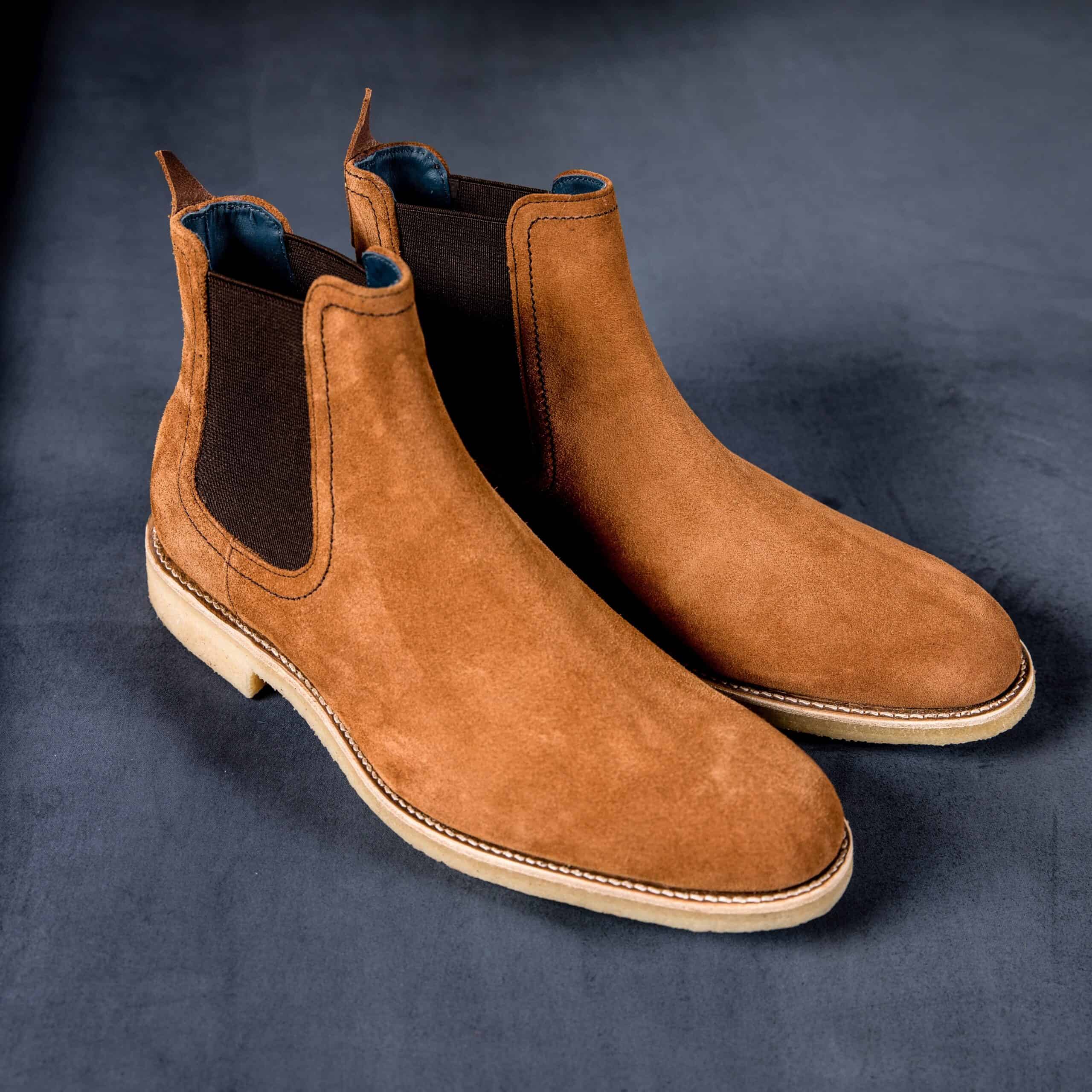Google searching “how should Chelsea boots fit” means you’re as much of a sucker for them as we are. Whether you’re on the hunt for the perfect boots you can wear both to work and a date night or you’re wondering what’s the secret to recognizing a perfectly-fitting boot, we’ve got your back!
Chelsea boots have been around for quite some time. On the off chance that you’re willing to wear a pair of boots without knowing anything about them, Chelsea boots are slim-fitting ankle boots known for the piece of elastic around the side of the ankle that gives them that signature look.
Chelsea boots actually date from the Victorian era, but Queen Victoria referred to them as “elastic ankle boots.” The English continued wearing these boots for years to come because they were convenient, comfortable, and easy to slip on and off.
But, the so-called British “Mods” were the ones who truly made Chelsea boots stand out as a fashion statement (and a wealth statement, too). And, the name came naturally, too, considering that the Mods gathered on King’s Road in the Chelsea district of London.
With the history of Chelsea boots out of the way, we can proceed to answer your “how should Chelsea boots fit” question. While there’s nothing wrong with obsessing over (and purchasing) a pair of expensive, leather, or suede boots for the sake of looking good, perfectly-fitting boots are far more important.
Knowing what cues to notice when you’re searching for comfort can save you a lot of headaches, foot aches, and body aches. Hence, we’re here to ensure you understand what to look for when purchasing a pair of Chelsea boots, what not to look for, and what to do when you make a mistake.
How should Chelsea boots fit?
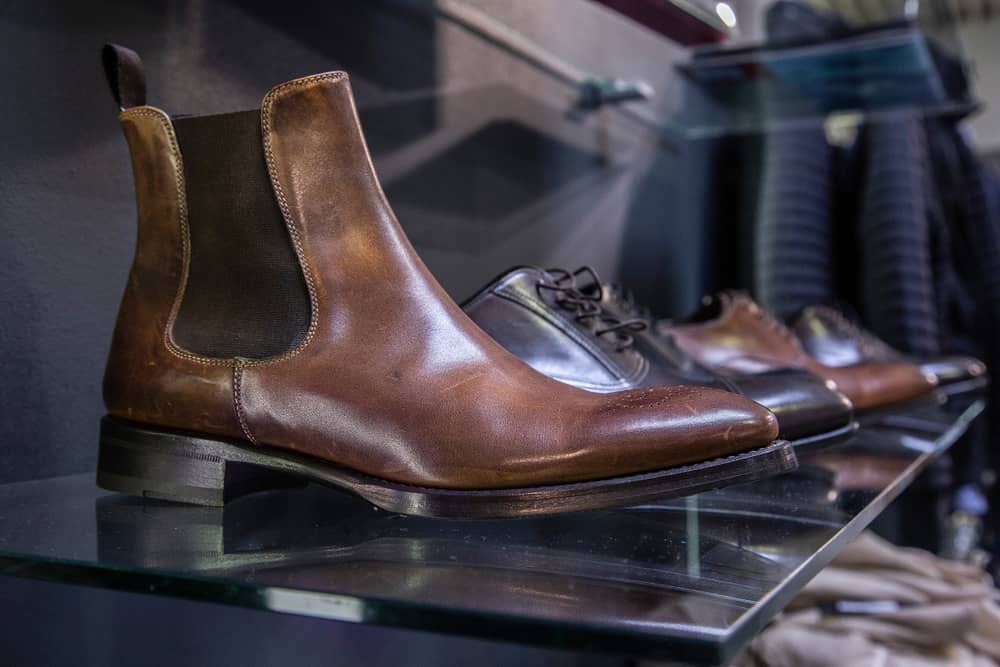
Like a glove! Chelsea boots are one of the few options you have when you’re searching for footwear that can work for the office, a night out with the boys (or the girls), and a date night.
Chelsea boots are easily dressed up with a white button-down and a houndstooth coat or dressed down with a simple tee and a leather jacket. Whatever style speaks to you the most, there’s no reason why you wouldn’t be able to add Chelsea boots as a wardrobe must-have. But, how should Chelsea boots fit?
First off, they shouldn’t be sloppy or slip off your feet. Chelsea boots are comfortable because they’re easy to slip on and off.
But, they don’t have those signature heavy-duty laces (like Dr. Martens or other chunky, combat boots) to keep them on as tight as you want. Hence, you need them to fight just right to ensure they stay on your feet.
Other than that, they should look quite narrow on your feet (rather than wide). The OG Chelsea boots are supposed to be snug around your toes – stylists often advise going half a size down to ensure they’re tight enough, especially when they’re made from fabrics that tend to stretch with wear.
Of course, they should be snug around your ankles, too. And, the sides of your Chelsea boots should be smooth with no wrinkles, bumps, or lumps.
Whether you go for smooth leather, suede leather, or nubuck leather, your Chelsea boots should fit you to a tee and we’re here to make sure you know how to choose boots that do exactly that.
1. How wide should Chelsea boots fit?
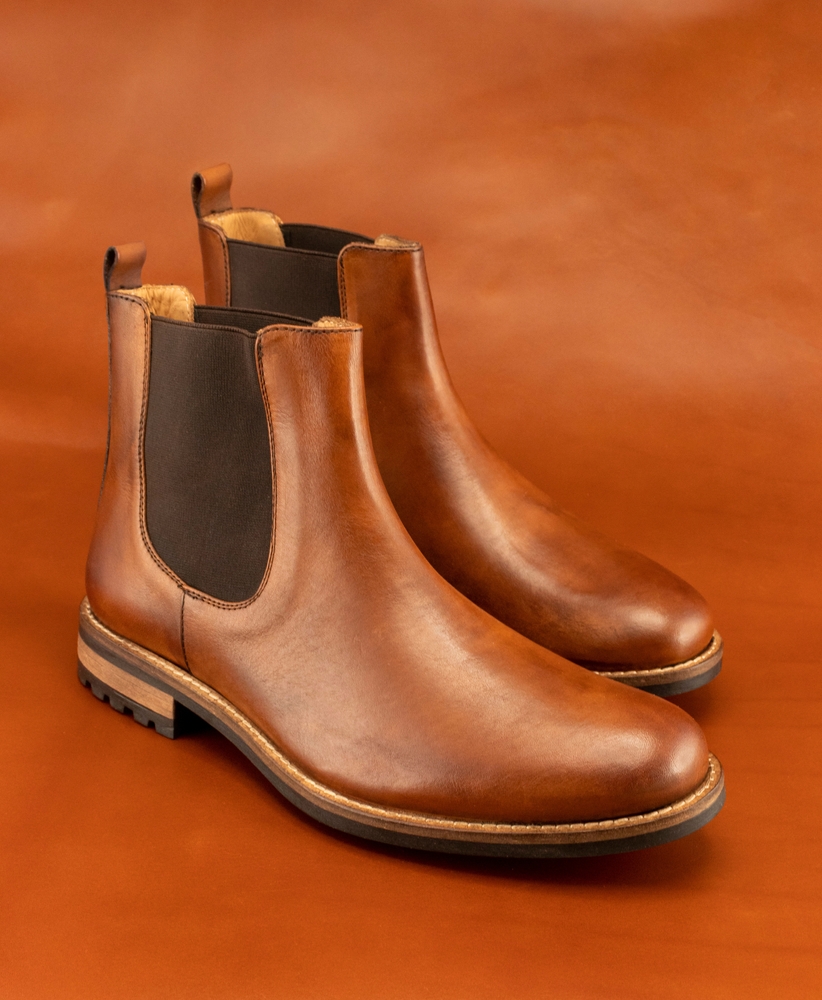
We have to tackle the width problem first because that’s the one that confuses most people. We touched upon the fact that your Chelsea boots should be narrow around the toes because they’re supposed to be a little tighter than other boots.
We also mentioned that you should even go smaller than you normally do to ensure your boots don’t slip off your feet while you’re walking.
But, there’s always a but when we’re talking about Chelsea boots. Here’s the thing, you would ideally measure your feet on a Brannock device to ensure you get the right boots.
Hence, you would get them bigger or smaller depending on your measurements and what would be most comfortable for your feet. You would probably go bigger to make sure you can wear thicker socks during the winter or orthotics for different foot problems.
But, Chelsea boots depend on that “narrow fit” to stay on your feet. What are you supposed to do, then? Make sure your Chelsea boots are wider around the areas that would normally rub on your feet while you’re walking.
Wider-fitting Chelsea boots aren’t that bad, especially when you make sure they’re sung around to ankles to ensure they don’t slip off your feet. Chelsea boots are flexible enough to stretch and accommodate swollen feet (at the end of a long day), as well as stay snug at the same time.
2. How should Chelsea boots fit around the heel?
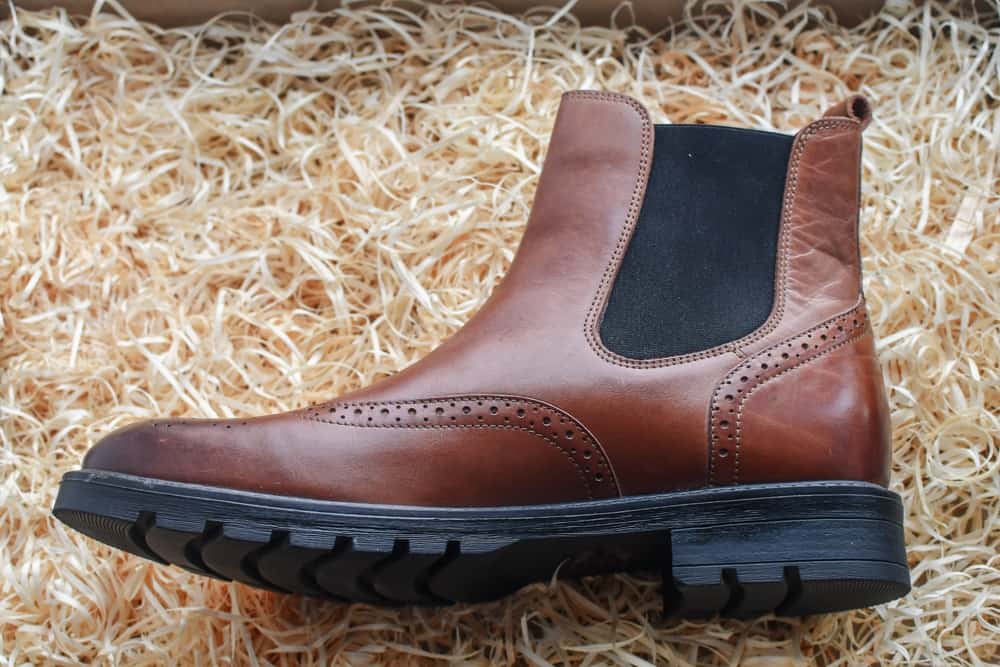
Chelsea boots don’t have pretty much any means of tightening around the foot or the ankle, other than those stretchy areas we mentioned beforehand. And, when you’re searching for perfectly-fitting boots, one of the things you keep an eye on happens to be the snugness or the ability to stay on your foot.
Now, Chelsea boots don’t have a problem with slipping on and off your feet. But, when you don’t get the right tightness around your feet, you might experience a myriad of problems while wearing them.
Chelsea boots that are too big around your ankles, for example, are guaranteed to be sloppy. Chelsea boots that are too tight around your ankles, on the other hand, are bound to cause swelling, chafing, and other uncomfortable problems.
When you’re wondering whether your Chelsea boots fit the way they should, check the way they fit around your heels. They should be easy to wear without having to aggressively wiggle your feet. They should be snug around your heels without putting too much pressure on them while you’re walking.
Of course, you should always remember that your Chelsea boots are bound to stretch a little with wear which means they might not be as tight as the first time you put them on. But, you shouldn’t bank on them stretching out if you’re not comfortable with how they fit from the moment you put them on.
3. How should Chelsea boots fit around the toe box?
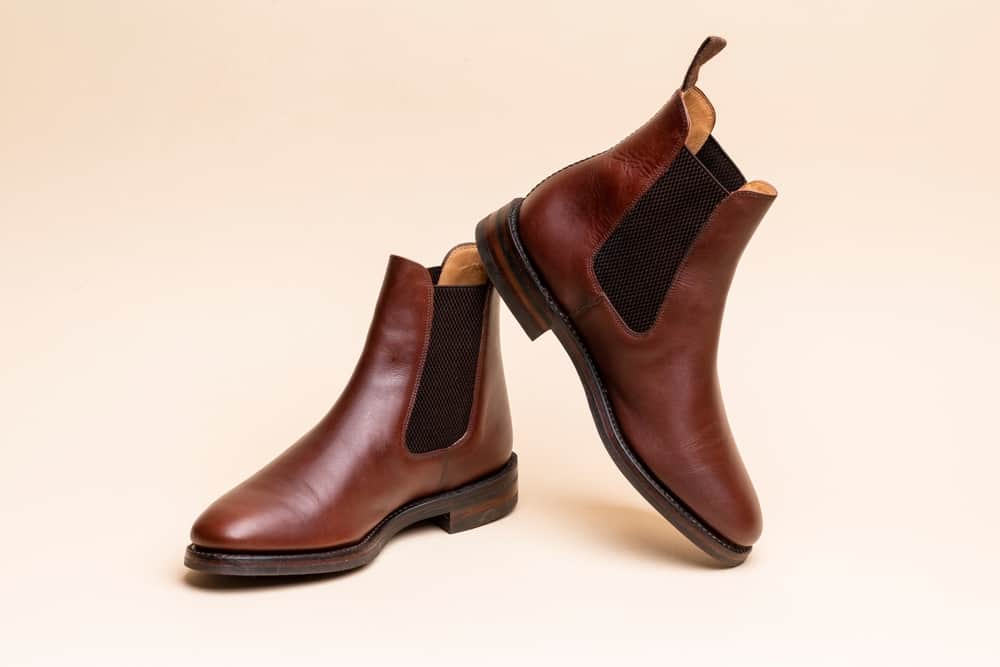
Argh, don’t you hate the trend of having literally no room for your feet with the new, fashion-forward footwear?!
Chelsea boots aren’t the tightest boots on the market, but that’s not to say that they have the widest toe box for people with wider feet. As you already know, Chelsea boots are supposed to be slim-fitting, narrow, and elegant.
And, to everyone’s demise, wide footwear doesn’t necessarily belong on the latest cover of Vogue. But, your comfort should be your number one priority and you should always go for wide-fitting Chelsea boots if that’s something you need.
Chelsea boots should be snug around your toes, too. But, there should be a balance between snug and strangling/constricting. When you put your Chelsea boots on, you should have enough room to wiggle your toes. But, you shouldn’t have enough room to move your feet around.
Now, a great rule of thumb happens to be that you want the space between your longest toe and the toe box to be around half an inch long. That should provide plenty of wiggle room for your toes while still keeping the boots from sliding off.
4. How should Chelsea boots fit around the arch?
Whether you’re dealing with high-arched feet or flat feet, you might need special arch support. While Chelsea boots are comfortable, supportive, and stable, most of them don’t have arch support.
We would go as far as to argue that that’s because most people don’t need arch support, but there are other reasons why you might need that added padding.
Maybe you’re standing on your feet for hours and hours for work. Perhaps you have other feet problems that require you to have proper support.
Whatever the case might be, chances are you need your Chelsea boots to offer enough space for your inserts or orthotics. Worry not, though, because you can always bring them while you’re shopping and try them on before you bite the bullet.
Or, when you’re shopping online, you can search for Chelsea boots that are described as roomy, wide, or wide-fitting. Of course, you can also go for a bigger boot to ensure you can fit whatever inserts you have.
5. What socks should you wear with Chelsea boots?
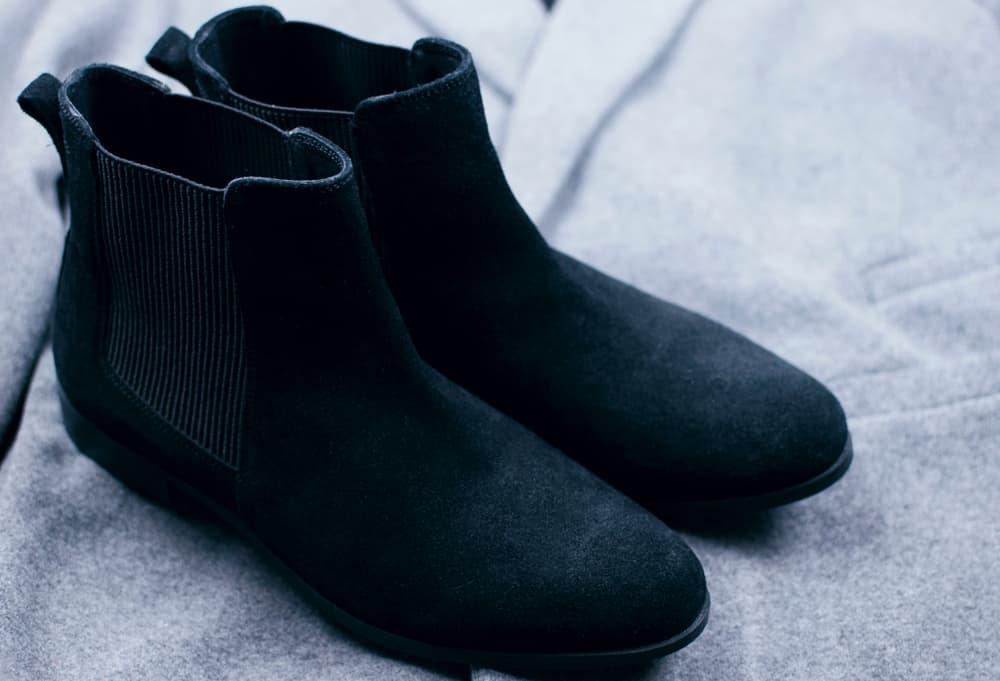
Oh, every sock lover out there knows why we must talk about socks! Whether you love them or hate them, you can’t wear Chelsea boots without proper (or appropriate) socks. We would suggest you even wear your favorite socks when you’re going boot shopping to ensure your boots work with them.
And, we’re not only talking about aesthetics!
Thicker socks might need you to get bigger boots or wider boots to ensure you can wear them without getting blisters, swelling up, or getting uncomfortable. Thinner socks might not offer enough padding and your feet might keep sliding forward and backward while you’re walking.
Wear the type (or the thickness) of socks that are the most similar to the socks you plan on wearing with your Chelsea boots all the time. We understand that might sound crazy.
But, granted that you’re serious about getting perfectly fitting Chelsea boots, you know why we’re going over every little detail. Other than that, though, you’re free to go with what your heart desires.
How can you make Chelsea boots wider when they’re too small?
Argh, there’s nothing worse than coming home with the Chelsea boots you just bought only to figure out they’re too small. More times than not, Chelsea boots fit tightly before you wear them out because they’re supposed to be more narrow and snug than most other boots.
Wear them for a couple of days before you start experimenting. Protect your feet with socks, blister-healing patches, and cushioning patches to ensure you don’t damage your feet while you’re wearing them.
When you notice they aren’t budging, don’t shy away from trying a couple of tricks to make them wider, softer, and more pliable. Leather Chelsea boots are the easiest to work with (fingers crossed those are the ones you purchased), but these tricks should work on other fabrics, too.
Start by warming your boots carefully with a hairdryer, gently stretch them out while you’re working on them, and don’t focus on one area for too long (you don’t want to burn your boots). After that, apply leather stretching oil around the exterior and hope for the best.
Don’t do these tricks on synthetic fabrics, though. Opt for shoe stretchers and other means of stretching the boot from the inside (rather than the outside).
Suede wouldn’t work that great with leather stretching oils because you wouldn’t be able to remove the oils afterward. Opt for the heating method or the shoe stretcher method.
How can you make Chelsea boots tighter when they’re too big?
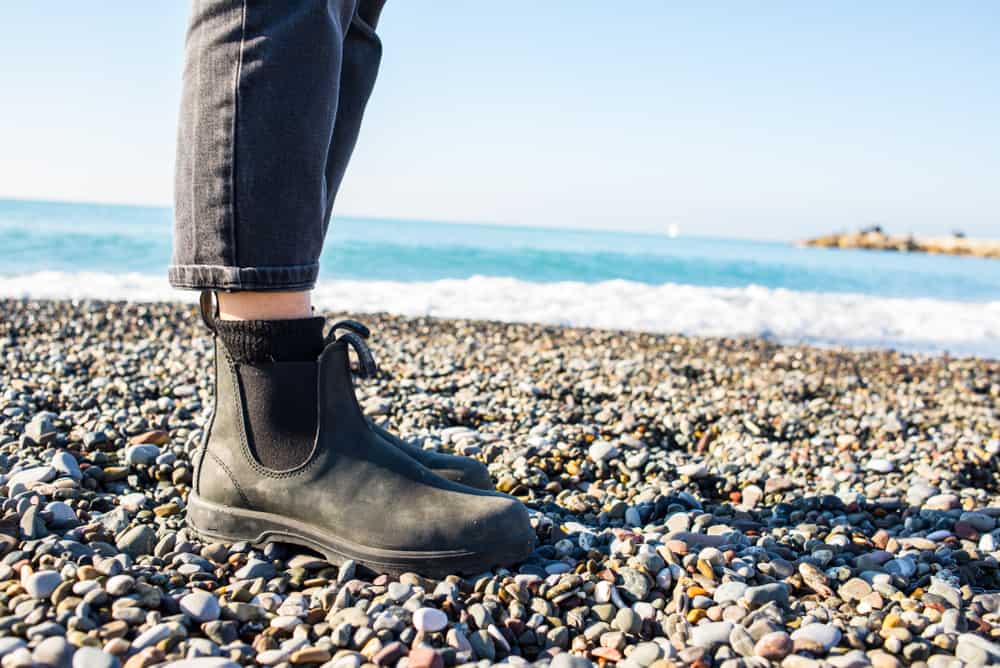
Why does that sound even worse than buying them too big? Whatever the case might be, your Chelsea boots aren’t fitting the way you want them to and you’re looking for advice on how to change that. We suggest you make your boots tighter with these tricks.
First off, you can always wear thicker socks, add padding around your feet, or even add orthotics to make your boots a little tighter than they are. Now, that’s not going to actually change how tight your boots are, but you won’t have to worry about them slipping off your feet.
On the other hand, you can try freezing your boots. We know that sounds strange, but genuine leather can become tighter when exposed to extreme cold. Wrap something around your boots to protect them, freeze them overnight, and allow them to completely thaw before you wear them again.
Last but not least, dampen the leather before wearing your boots. Depending on the fabric, your Chelsea boots might shrink after drying. Whatever you decide to do – good luck!
